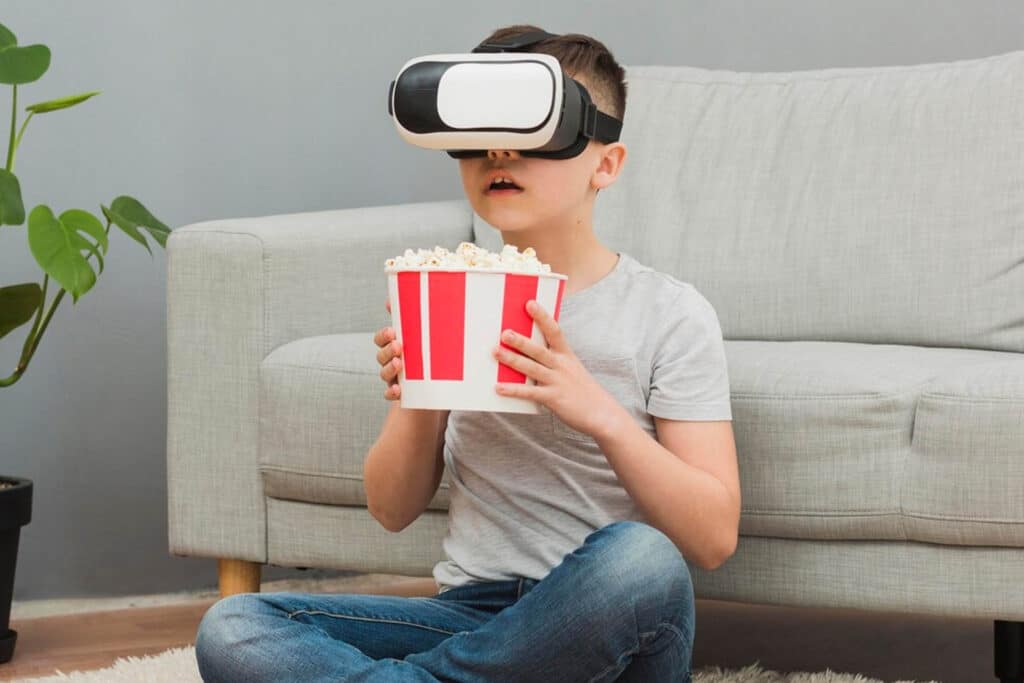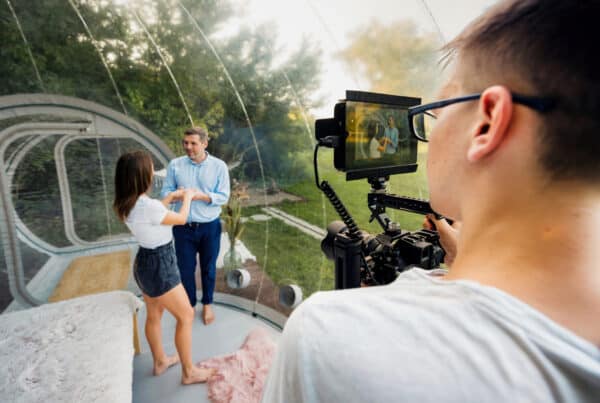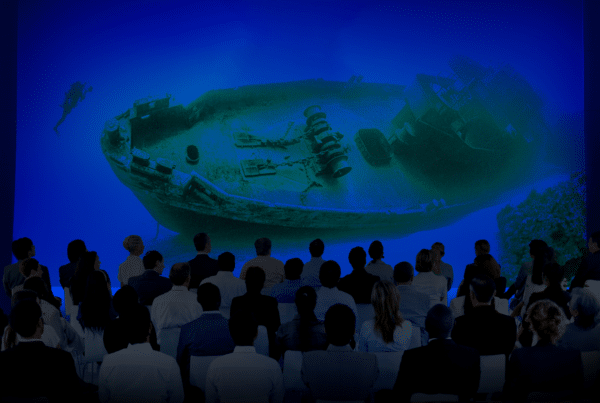
Table of Contents
ToggleAs technology evolves, storytelling is radically transforming with cinematic virtual reality (VR). This groundbreaking medium invites audiences into immersive worlds, allowing them to step into characters’ shoes and experience narratives in a 360-degree panorama. In this blog post, we will explore the captivating universe of cinematic VR, examining its innovative techniques and artistic potential. Join us as we uncover how this cutting-edge technology is shaping the future of narrative experiences and redefining the boundaries of imagination in storytelling.
Introduction to Cinematic Virtual Reality (CVR)
Cinematic Virtual Reality (CVR) is an innovative blend of storytelling and technology, transforming narrative experiences. Unlike traditional film or TV, which keeps viewers passive, CVR immerses audiences in a multidimensional space where they can engage with the story interactively. Instead of merely watching a character’s journey, you stand beside them, witnessing their struggles and triumphs through your own movements.
CVR employs cutting-edge technology, including high-resolution visuals, spatial audio, and interactive elements, to create fully immersive environments. This medium offers potential beyond entertainment, presenting opportunities for education, therapy, and social connection. Join us as we explore how CVR is redefining storytelling and enhancing emotional engagement.
The Evolution of Storytelling in Film and VR
The evolution of storytelling in film and virtual reality (VR) marks a fascinating intersection of art and technology, reshaping how narratives are experienced. Traditional filmmaking has relied on a linear format, guiding viewers through predetermined paths, evoking emotions through visual and auditory cues. However, VR transforms the viewer from a passive observer into an active participant.
In VR, narratives unfold in a three-dimensional space, allowing users to interact with their surroundings and make choices that influence the story. This immersive storytelling fosters a deeper connection, inviting personal interpretation and emotional engagement. As technology advances, high-resolution graphics, realistic physics, and spatial audio create fantastical worlds, redefining narrative structures and offering boundless potential for creators to craft experiences that engage all the senses. The evolution of storytelling is truly revolutionizing our relationship with narratives.
Differences Between Traditional Cinema and VR Experiences
As we enter a new era in storytelling, it’s crucial to recognize the differences between traditional cinema and virtual reality (VR). The most significant contrast is in the viewer’s role: in traditional cinema, audiences are passive observers, following the director’s vision through a predetermined narrative. Every frame is crafted meticulously to evoke specific emotions.
Conversely, VR immerses viewers in a 360-degree environment, allowing unprecedented interactivity. Users are not just watching; they actively explore the virtual world at their own pace, forging deeper emotional connections with characters.
Moreover, while traditional films often follow a linear storyline, VR enables branching narratives based on viewer choices. This unique structure fosters personal investment in the story. VR’s multisensory engagement, incorporating haptic feedback and spatial audio, enhances immersion, transforming how narratives are experienced and consumed.
The Impact of 360-Degree Filmmaking on Audience Engagement
The rise of 360-degree filmmaking has revolutionized storytelling, creating a new level of audience engagement. Unlike traditional cinema, where viewers are passive spectators, 360-degree content immerses audiences in a dynamic sphere of sights and sounds, enabling exploration from various angles. This interactivity fosters a deeper connection to the narrative, inviting viewers to become active participants.
Imagine standing in a vibrant market, fully enveloped by its colors, sounds, and scents. With 360-degree filmmaking, you can look around and interact with the scene, enhancing emotional engagement and memory retention. Filmmakers can strategically position critical elements, creating moments of surprise that deepen understanding of character motivations and plot developments.
As creators embrace 360-degree techniques, we can anticipate innovative narratives that push conventional boundaries, offering viewers unique journeys through their favorite stories.
The Future of Cinematic VR: Trends and Innovations
As we enter a new era in storytelling, the future of cinematic virtual reality (VR) is filled with innovations that will reshape narrative experiences. Advanced technologies like artificial intelligence and real-time graphics are paving the way for immersive, interactive storytelling. Imagine narratives that adapt to your choices, allowing you to influence plots and character arcs dynamically, shifting from passive viewing to active participation.
The rise of 360-degree cameras and motion capture techniques is enhancing storytelling by creating rich, detailed environments that draw viewers into the action. This immersion fosters a deeper emotional connection with characters and narratives.
Accessibility is crucial, with decreasing VR headset costs and mobile-compatible experiences enabling broader audience engagement. As VR becomes mainstream, we can anticipate diverse narratives that resonate with various demographics. The fusion of technology and creativity in cinematic VR promises to redefine storytelling and our connections with one another and the world.
In summary, the evolution of storytelling through cinematic virtual reality (VR) is revolutionizing how narratives are experienced. Unlike traditional film, which keeps viewers as passive observers, VR immerses audiences in interactive, 360-degree environments, allowing them to step into characters’ shoes and engage with the story actively. This blog explores the innovative techniques of cinematic VR, highlighting its potential for deeper emotional engagement and its applications beyond entertainment, including education and therapy.
Key differences between traditional cinema and VR include the viewer’s role, as VR encourages exploration and interaction, leading to personalized narrative experiences. Additionally, advancements such as high-resolution visuals, spatial audio, and 360-degree filmmaking enhance immersion and emotional connections. As technology progresses, the future of cinematic VR promises to redefine storytelling, offering diverse narratives and unique journeys that deepen our connections with stories and each other.
Experience the future of storytelling with cinematic virtual reality! Contact Virtually Anywhere today to discover how immersive VR technology can revolutionize the way audiences engage with narratives. Whether for entertainment, education, or marketing, cinematic VR offers unparalleled immersion and emotional connection. Don’t just tell a story—let your audience step inside it. Start creating unforgettable experiences today!




